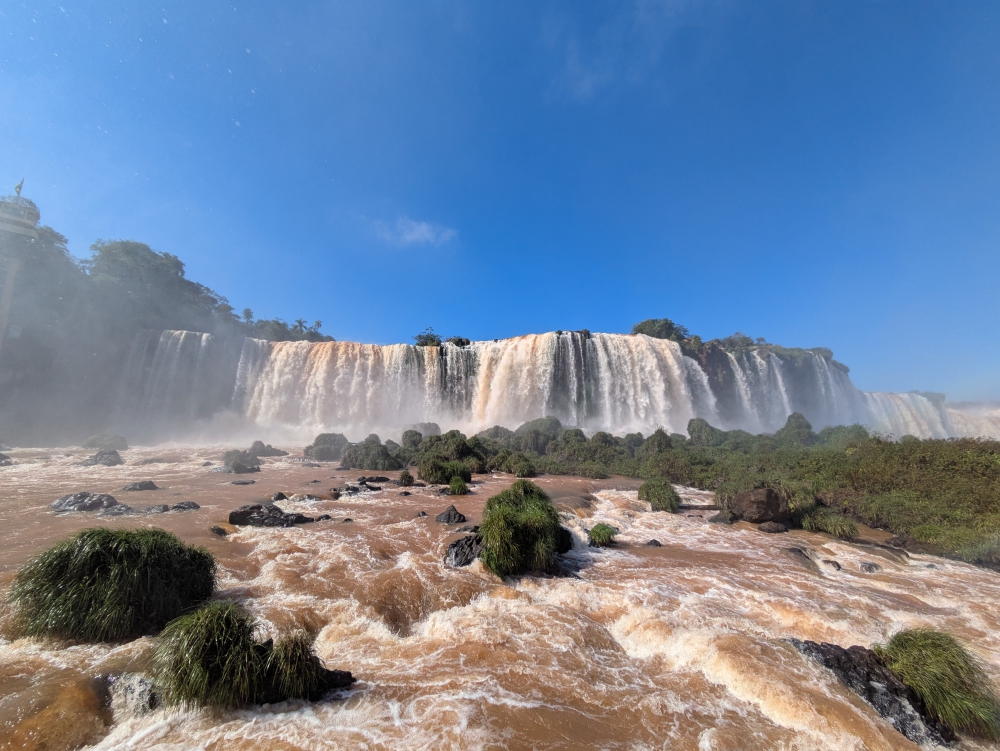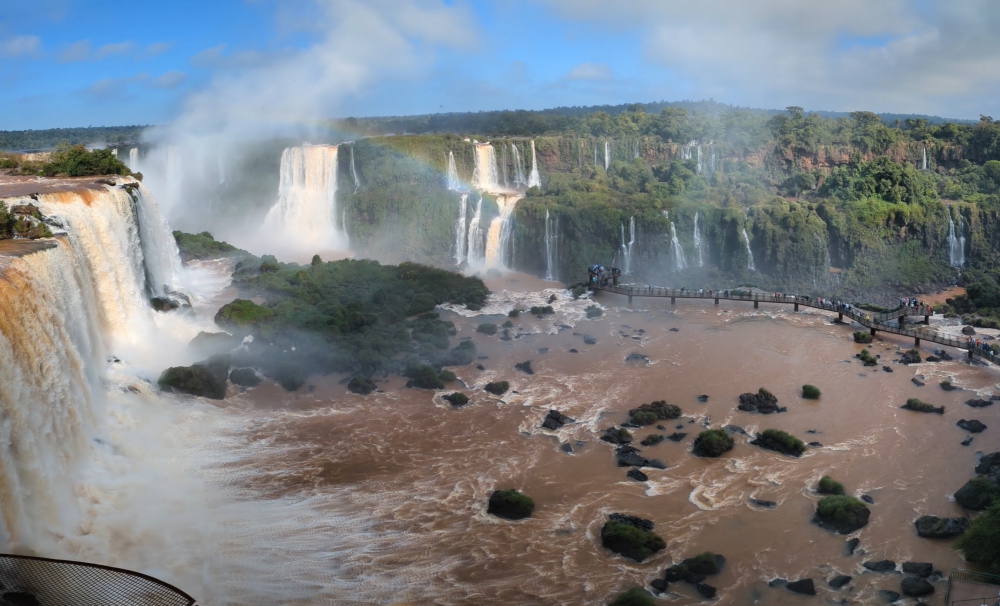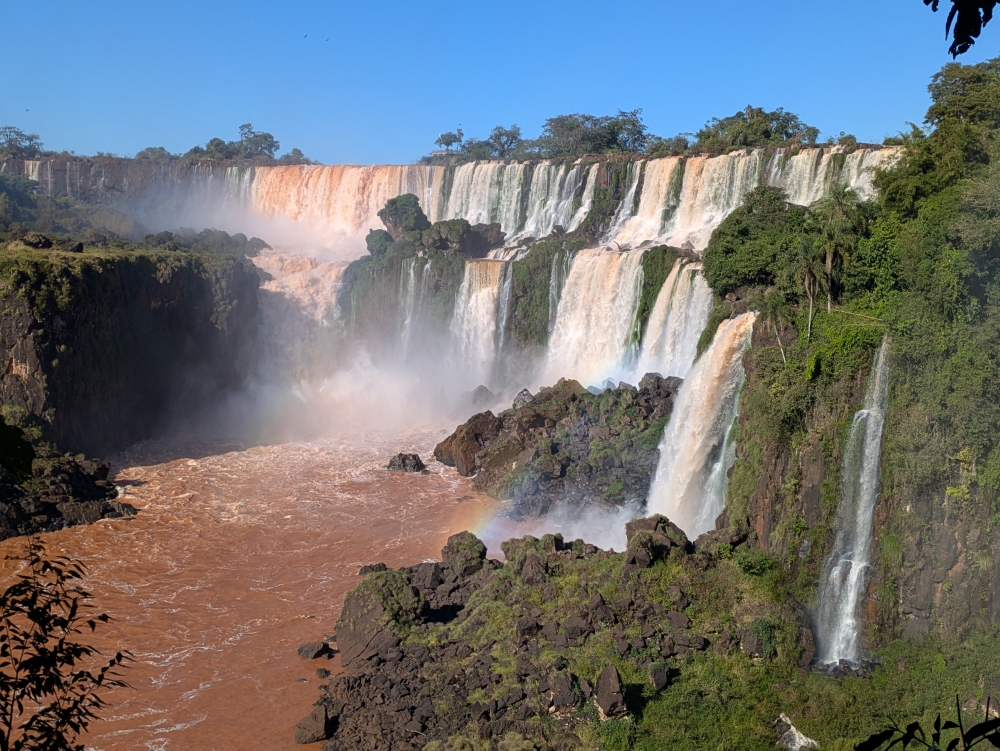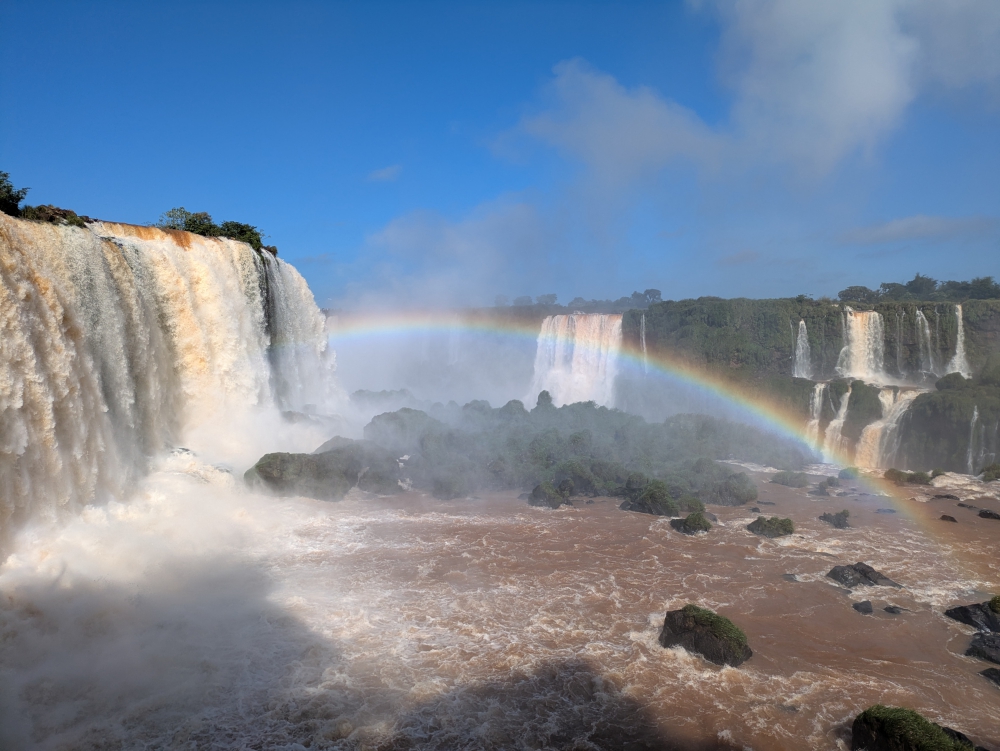Truth be told, I didn’t know anything about these gigantic waterfalls before arriving on the South American continent, which is strange, since they belong in the same category as majestic Victoria Falls and Niagara Falls. Like me, you’ve probably heard of those natural wonders. Yet, Eleanor Roosevelt is known to utter the words “Poor Niagara!” when she first saw Iguazu Falls. 🙂

Following a boardwalk on the lowest level in Brazil
Iguaçu/Iguazú Falls are recognized as a natural wonder of the world, a UNESCO World Heritage Site, and one of the “New 7 Wonders of Nature.” The area is known for its immense scale, with 275 individual cascades spanning nearly two miles (3 km), making it the largest waterfall system in the world. The falls divide the river into the upper and lower Iguazu River and have heights of 200 to 263 feet (60–82 meters).

The amazing vista opening up after our walk – a great way to approach this site in Brazil
I had no idea that Iguaçu/Iguazu Falls straddled a border between two countries or that their name was spelled differently, depending on the side of the border. Heck, I didn’t even know just how impressive and numerous the falls were until we showed up!

Best view of the Argentinian falls
Mark and I prefer not to research highlights much or look at photos ahead of time. Just like with other spectacular sites, like Bryce Canyon and Arches National Parks in Utah, we arrived at this site “unprepared” and gazed in wonder. “Wow! Those waterfalls keep going as far as the eye can see.” Impressive! When you don’t have expectations, you can truly be surprised, awed, and inspired.

Overview of some falls at a lower level in Brazil
Iguaçu Falls in Brazil
As I mentioned in my recent expense report for June, Mark and I only planned to visit the Brazilian side of the falls, after asking among our friends which side they preferred (and why), reading comments in our free iOverlander camping app, and considering fees and logistics.
Continue reading





































